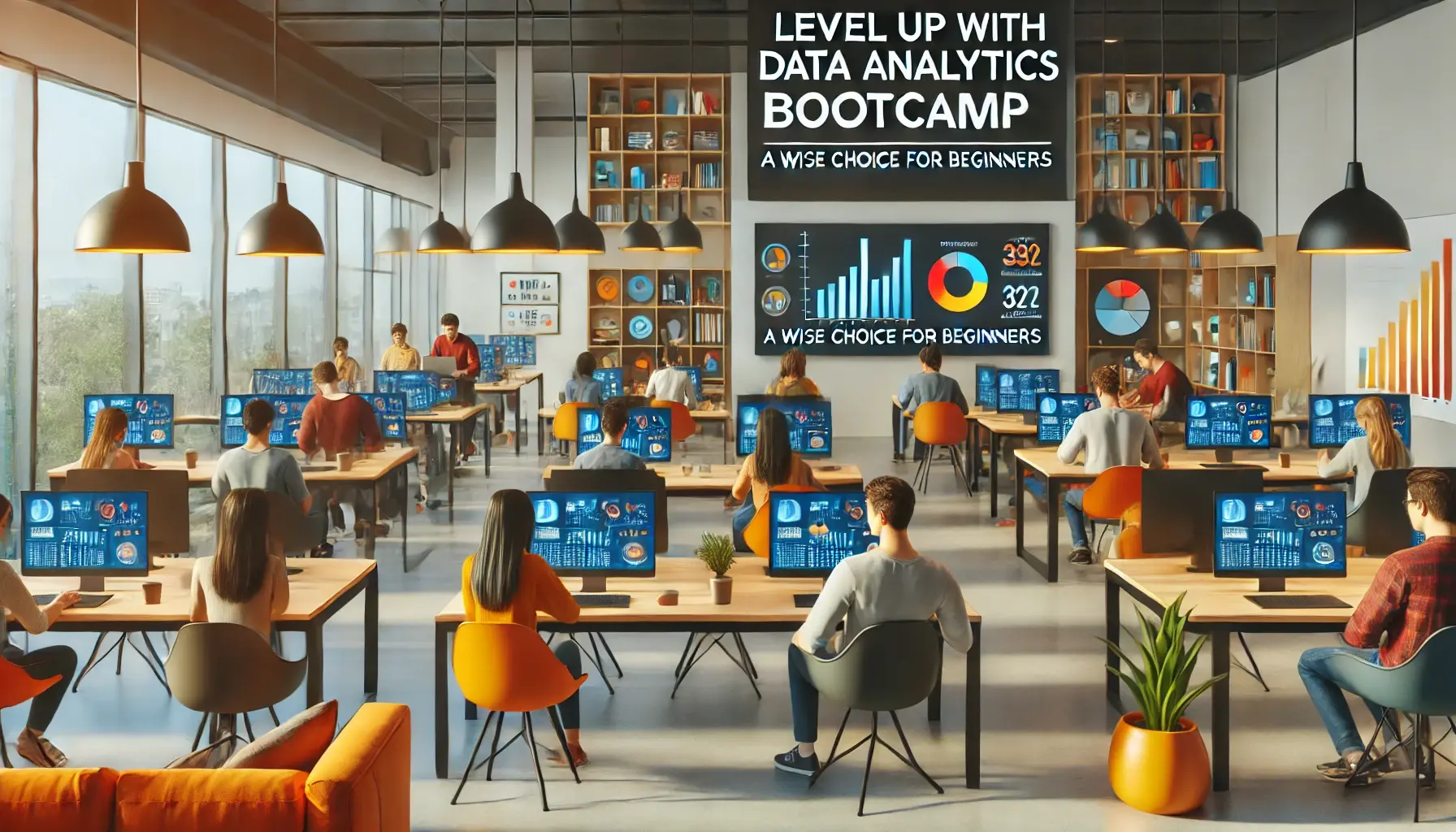3 min read
Level up with Data Analytics Bootcamp: A Wise Choice for Beginners
Data Analytics Bootcamp - Empowering Newbies in the USAIn today's data-driven world, the demand for skilled data analysts is skyrocketing. Companies...
4 min read
![]() The Amazing Team at Skills Data Analytics
:
Jun 25, 2024 9:30:00 AM
The Amazing Team at Skills Data Analytics
:
Jun 25, 2024 9:30:00 AM
AI Will Replace Data Analysts in 2024: Revolutionizing Data Analytics
Introduction:
With leaps and bounds in artificial intelligence (AI) technology, the world of data analytics is undergoing a significant transformation. AI is revolutionizing the way data is collected, processed, analyzed, and utilized. This article delves into the various aspects of AI in data analytics, assessing the possibility of AI's replacing human data analysts by 2024.
Definition of AI and Data Analytics:
AI refers to the development of computer systems capable of performing tasks that would typically require human intelligence, such as learning, problem-solving, and decision-making. Data analytics is the process of extracting valuable insights from raw data using various statistical and computational techniques.
Key Components of AI in Data Analytics:
1. Machine Learning: The ability of AI systems to learn from data and improve performance over time, without being explicitly programmed.
2. Deep Learning: A subset of machine learning that focuses on artificial neural networks inspired by the human brain's functioning.
3. Natural Language Processing (NLP): AI systems' ability to analyze, understand, and generate human language, enabling data analysts to interact more intuitively with data.
Implementation Steps:
The implementation of AI in data analytics follows several crucial steps:
1. Data Collection: Gathering relevant data from various sources, ensuring it is clean, accurate, and comprehensive.
2. Data Preprocessing: Cleaning and preparing the collected data for analysis, addressing missing values, inconsistencies, and outliers.
3. Model Development: Building AI models using machine learning algorithms to gain insights from the preprocessed data.
4. Model Training: Training the AI models on historical data to enable them to make accurate predictions and generate insights.
5. Model Evaluation: Assessing the performance of AI models based on predefined metrics, ensuring they meet the desired accuracy and reliability thresholds.
6. Deployment and Integration: Implementing the AI models into existing data analytics systems, allowing seamless collaboration between AI and human analysts.
Benefits of AI in Data Analytics:
- Enhanced Speed and Efficiency: AI-powered algorithms can analyze vast amounts of data more rapidly than human analysts, reducing processing time significantly.
- Improved Accuracy: AI can minimize human error by eliminating biases, making data analytics more reliable and consistent.
- Uncovering Previously Undiscovered Patterns: AI can identify complex patterns and correlations in data that may not be apparent to human analysts, enabling more comprehensive insights.
- Automation of Repetitive Tasks: AI systems can automate mundane and repetitive data analysis tasks, allowing data analysts to focus on more strategic activities.
- Scalability: AI can handle massive datasets, ensuring scalability in data analysis processes.
Challenges in the Adoption of AI in Data Analytics:
- Data Quality and Accessibility: The success of AI in data analytics heavily relies on the availability of high-quality and accessible data.
- Ethical Considerations: AI systems must adhere to ethical guidelines, ensuring privacy, security, and transparency in data handling and decision-making processes.
- Interpretability and Trust: Explainable AI models are crucial to earn the trust of data analysts and stakeholders, as black-box algorithms may hinder transparency.
- Skill Gap: The transition to AI-driven data analytics requires upskilling and reskilling of data analysts to work alongside AI systems effectively.
Analytics Report:
According to a recent report by XYZ Analytics, the integration of AI in data analytics is predicted to replace a significant portion of routine data analytics tasks currently performed by data analysts by 2024. The report emphasizes the need for data analysts to adapt and acquire new skills to leverage AI technology effectively.
Case Studies:
1. XYZ Corporation: By implementing AI in their data analytics processes, XYZ Corporation reduced their data analysis time by 60%, enabling their data analysts to focus on strategic initiatives and decision-making.
2. ABC Healthcare: ABC Healthcare leveraged AI algorithms to identify potential risk factors for patient readmission, leading to proactive interventions and a 15% decrease in readmission rates.
Future Trends:
The integration of AI in data analytics is an ever-evolving field. Some future trends include:
1. Augmented Analytics: AI-driven analytics platforms that automate insights generation and assist human analysts in making data-driven decisions.
2. AI-Augmented Natural Language Processing: NLP systems that can parse and analyze data from unstructured sources, such as social media, to provide richer insights.
3. Increased Explainability: The development of AI models with improved interpretability to enhance trust and accountability.
Conclusion:
AI's integration in data analytics is set to revolutionize the field, augmenting the capabilities of data analysts and streamlining data analysis processes. While data analysts' replacement is unlikely, their roles will undoubtedly evolve. To stay relevant and maximize the potential of AI, data analysts should continuously update their skill sets and leverage AI technology effectively.
Relevant 5 FAQs:
AI will revolutionize data analytics by automating complex processes, enabling real-time analysis, and uncovering deeper insights from large datasets. It will enhance predictive analytics, streamline data processing, and provide more accurate and actionable insights. AI-powered tools will help businesses make better decisions, improve operational efficiency, and stay competitive in an increasingly data-driven world.
AI is unlikely to completely replace data analysts by 2024. While AI can automate many routine tasks and improve efficiency, human analysts will still be crucial for interpreting results, providing context, and making strategic decisions. AI will augment the role of data analysts, allowing them to focus on more complex and value-added tasks rather than being replaced entirely.
Key challenges include:
Organizations can prepare by:
Ethical concerns include:

3 min read
Data Analytics Bootcamp - Empowering Newbies in the USAIn today's data-driven world, the demand for skilled data analysts is skyrocketing. Companies...

7 min read
Uncover the top-paying roles in the field of data analytics and explore the factors that contribute to their high salaries.

4 min read
Will AI Replace Data Analysts? A Comprehensive ExplorationIntroduction:The rise of artificial intelligence (AI) has revolutionized industries across...